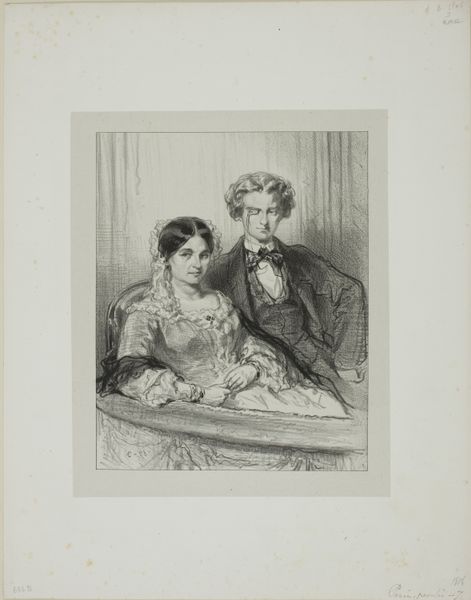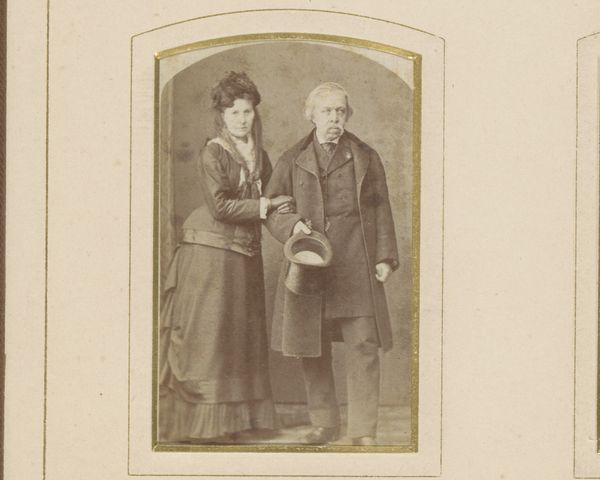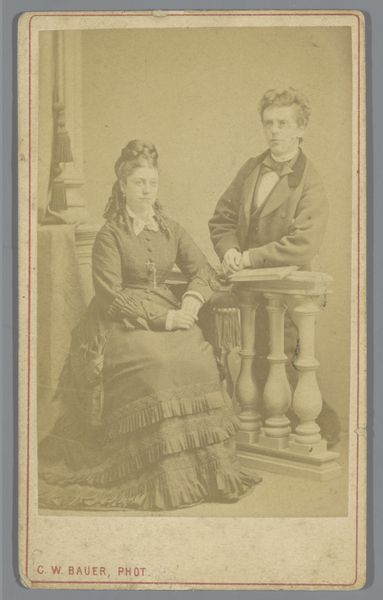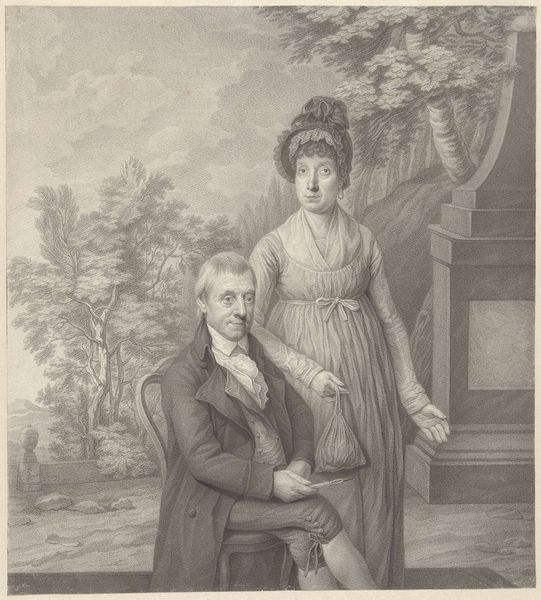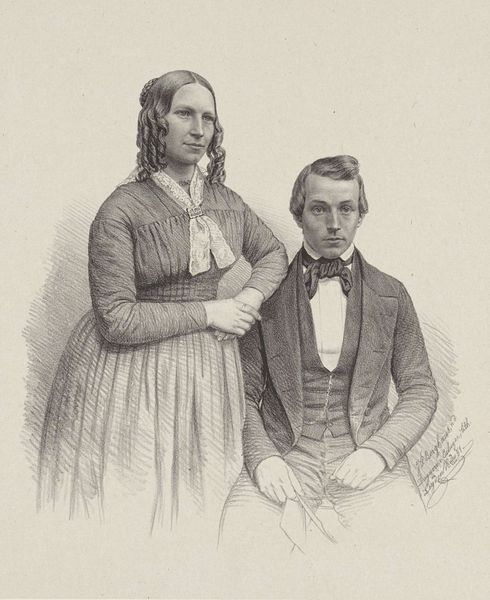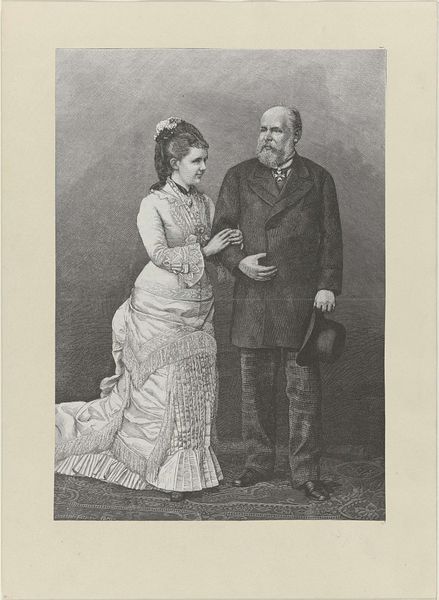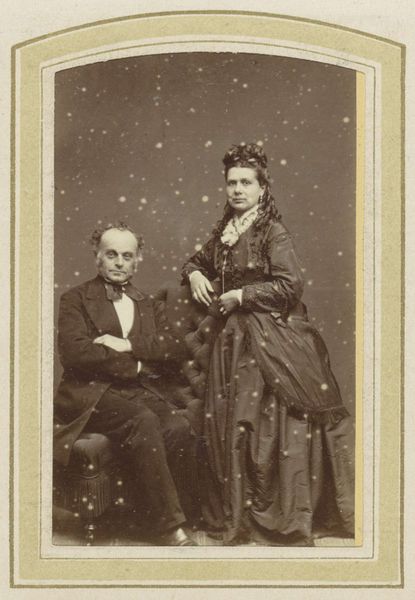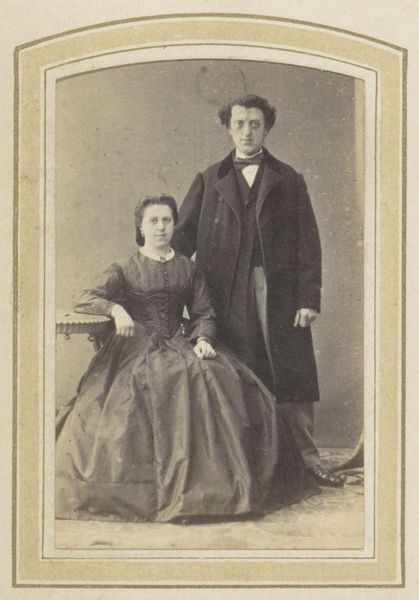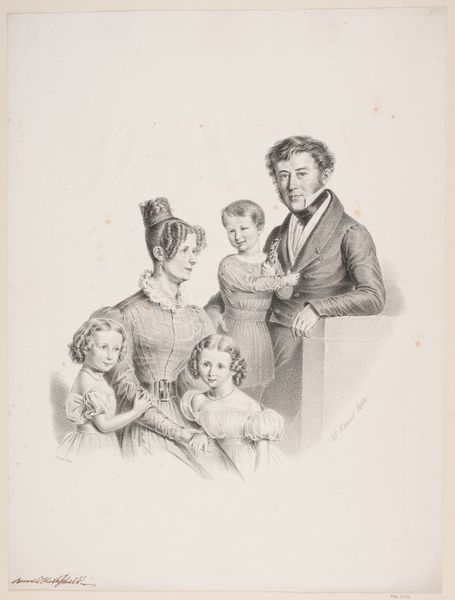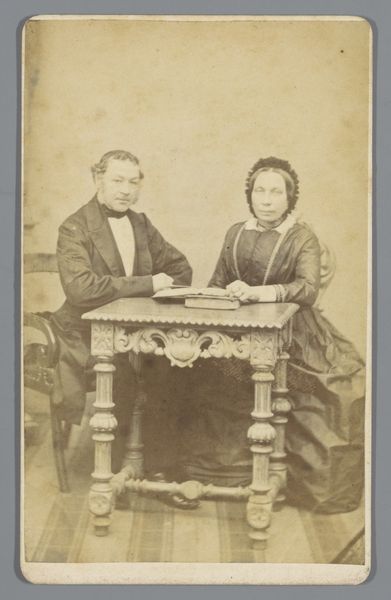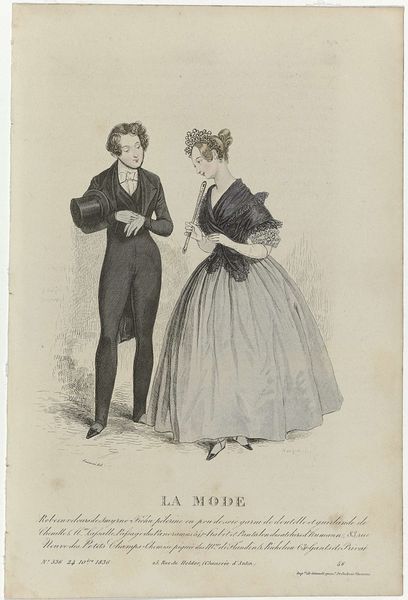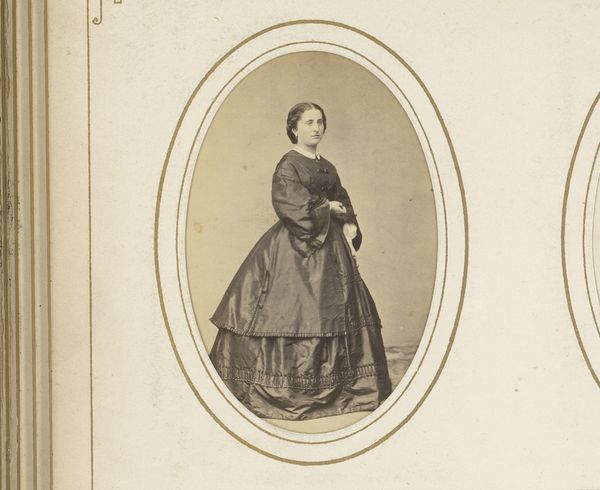
Dubbelportret van de uitgever Heinrich Arnz en zijn vrouw Possibly 1848
0:00
0:00
drawing, pencil
#
portrait
#
pencil drawn
#
drawing
#
imaginative character sketch
#
light pencil work
#
book
#
pencil sketch
#
personal sketchbook
#
idea generation sketch
#
pencil drawing
#
romanticism
#
pencil
#
sketchbook drawing
#
portrait drawing
#
pencil work
#
genre-painting
#
realism
Dimensions: height 300 mm, width 230 mm
Copyright: Rijks Museum: Open Domain
Curator: Oh, look at this, would you? A pencil drawing, tentatively dated to 1848, a double portrait by Johann Peter Berghaus. It's believed to be of the publisher Heinrich Arnz and his wife. Finds its home at the Rijksmuseum now. Editor: Stark. Both of them have such a determined, almost severe gaze. Is that just the convention of portraiture back then, or do you feel it too? It's… very serious business, being them. Curator: Perhaps it's the seriousness of the occasion—the formality expected in commissioning such a portrait. Though there's something undeniably grounded about their expressions. Editor: There’s a real stoicism, especially from the woman. Her hands are so still in her lap, a delicate knitting tool clutched as an assertion. The man presents papers or books, a demonstration of his occupation. It's interesting how Berghaus captures not just their likeness, but almost enshrines their social roles, their identities rooted in production. Curator: I completely agree! I see the papers in his hands as a way to broadcast to the world the social position they enjoyed. There are many small portraits in them. This almost acts as a sort of brand placement for them as they climb the societal ladder! And a quiet detail too - her dress feels meticulously rendered, a display of their material success, don’t you think? It’s very telling for an ostensibly "simple" pencil work. Editor: Indeed. The texture achieved through the pencil work adds an extra dimension; it's more than just an image; it’s an artifact documenting an ascent. The very presence of the scroll with maps, books, all suggests wealth, industry, intelligence. Curator: And think about Berghaus' choices too – it's almost photo-realistic but without photography's claim to objective truth, so every line, every shadow serves a very calculated purpose in building this portrait of industriousness and… aspiration, frankly. Editor: That's right; in an era increasingly obsessed with verifiable representation, it's refreshing to see the subtle but noticeable enhancement of these figures, these publishers. What you describe speaks to something larger than any surface level portraiture: they both seem as though they wish to make themselves known by how people perceive them. It really does spark contemplation! Curator: It certainly does, revealing hidden societal depths just beneath the surface, an ambition made visible.
Comments
No comments
Be the first to comment and join the conversation on the ultimate creative platform.

